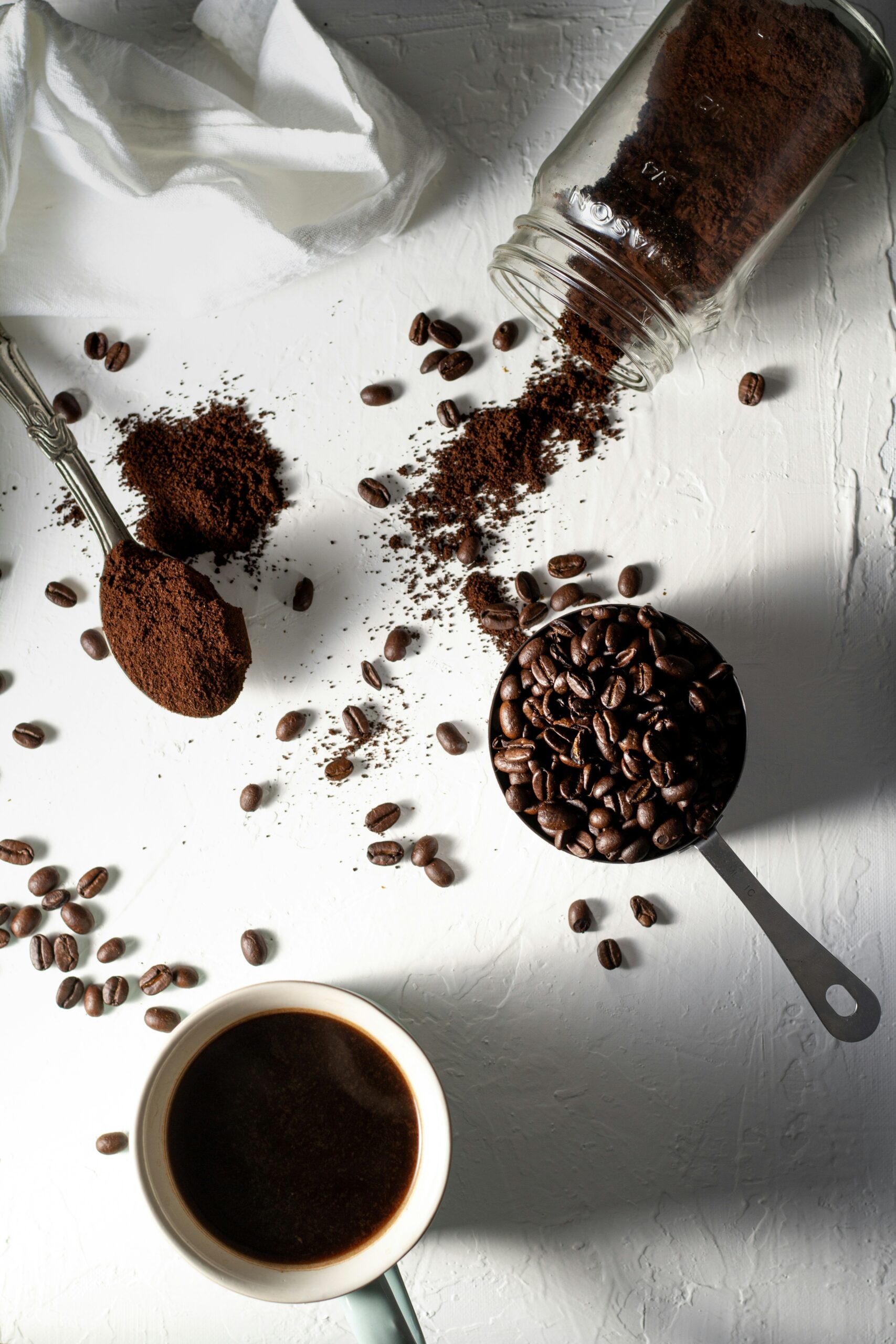vivid dreams after cutting caffeine — If you’ve reduced your coffee, tea, energy drinks, or pre-workout and suddenly find yourself having ultra-real, movie-like dreams, you’re not alone. Many people report vivid dreams after cutting caffeine within just a few nights of changing their routine. These dreams can feel unusually detailed, emotional, and memorable—sometimes even unsettling. While research rarely studies dreams directly in caffeine reduction, a strong scientific thread connects caffeine, sleep stages, and dream recall. Here’s what’s likely going on, how to manage the transition, and smart sleep strategies if vivid dreams after cutting caffeine are keeping you up.

H2: Vivid dreams after cutting caffeine: what’s really happening? Although there’s no single definitive study that proves cutting caffeine causes vivid dreams, the pieces fit together well:
- Caffeine blocks adenosine, a sleep-promoting chemical that accumulates while you’re awake. By blocking adenosine receptors, caffeine keeps you alert.
- As caffeine wears off, sleep pressure rebounds. Consuming caffeine too late can disrupt your ability to fall asleep and fragment your night.
- When you cut back, your sleep often consolidates and deepens. Over a few days, your body may spend more time in restorative stages, including REM sleep—the stage most linked with vivid, emotionally rich dreaming.
The result: more REM, fewer interruptions, and wake-ups from REM that make dreams feel fresh and highly recallable. Thus, vivid dreams after cutting caffeine are a plausible—and common—experience.
H2: How caffeine changes sleep—and why vivid dreams after cutting caffeine emerge Here’s how caffeine shapes a typical night of sleep:
- Delayed sleep onset: Afternoon or evening caffeine can push bedtime later by keeping your brain alert as adenosine signals are blocked.
- Less deep sleep: Studies show caffeine reduces slow-wave NREM sleep, the deep, restorative phase.
- Fragmentation: You wake more at night, which cuts into total sleep time and alters the balance of sleep stages, including REM.
When you reduce or time your caffeine earlier, your sleep can rebound:

- More total sleep: With fewer night wakings, you get longer continuous sleep.
- More REM opportunity: The architecture of sleep shifts back to its natural rhythm, and REM periods lengthen as the night progresses.
- Better recall: You’re more likely to awaken out of REM, enhancing dream memory. That’s one reason vivid dreams after cutting caffeine become so noticeable.
H2: REM sleep 101 and vivid dreams after cutting caffeine REM (rapid eye movement) is the stage where:
- Your brain is highly active while your muscles are largely atonic (paralyzed).
- Emotion processing ramps up; imagery and narrative complexity tend to spike.
- Dream recall is stronger if you wake directly from REM.
When sleep improves, REM episodes lengthen later in the night. If you’re newly waking up directly from REM (for example, just before your alarm), your dreams can feel extraordinarily vivid. It’s this timing—plus more consolidated sleep—that likely explains vivid dreams after cutting caffeine for many people.
External science and resources on REM and caffeine:
- American Academy of Sleep Medicine overview of sleep stages: https://sleepeducation.org/sleep-studies/
- Drake et al. on caffeine affecting sleep even 6 hours before bedtime (Journal of Clinical Sleep Medicine): https://jcsm.aasm.org/doi/10.5664/jcsm.3170
- Review on adenosine and sleep regulation: https://www.ncbi.nlm.nih.gov/pmc/articles/PMC4701082/
How soon do vivid dreams after cutting caffeine start—and how long do they last?
- Onset: Many people notice changes within 2–5 nights after reducing caffeine, especially if they previously consumed coffee or energy drinks late in the day.
- Duration: The effect often fades after 1–3 weeks as your sleep stabilizes and your dream recall normalizes.
- Individual differences: Genetics (like variations in CYP1A2 that influence caffeine metabolism), overall sleep debt, stress, and timing habits can all shape how intense or persistent vivid dreams after cutting caffeine feel.
Practical ways to manage vivid dreams after cutting caffeine If vivid dreams after cutting caffeine are disruptive, try these steps:

- Taper, don’t quit cold turkey: Reduce daily caffeine by 25–50% every 3–4 days to moderate withdrawal and sleep swings.
- Time your last dose: Avoid caffeine at least 8 hours before bedtime; 12 hours is safer if you’re sensitive.
- Keep wake times consistent: Anchoring your wake-up time stabilizes REM timing and may reduce startling awakenings from REM.
- Optimize bedroom cues: Cooler temperature (around 18–19°C), blackout shades, and low noise promote uninterrupted sleep.
- Write it down: A quick dream journal can externalize intense imagery and ease middle-of-the-night rumination.
- Relaxation rituals: 20–30 minutes of wind-down—dim lights, breathing, light reading—lowers pre-sleep arousal that can amplify dream intensity.
H2: Are vivid dreams after cutting caffeine a bad sign? Not usually. Vivid dreams after cutting caffeine reflect shifts in sleep architecture and dream recall, not damage or disease. Still, consider consulting a clinician if:
- Nightmares cause significant distress or daytime impairment.
- You suspect REM sleep behavior disorder (acting out dreams, falling out of bed).
- You have sleep apnea symptoms (loud snoring, gasping, daytime sleepiness).
- You experience severe insomnia lasting more than a month despite good habits.
Find a board-certified sleep physician via the AASM directory: https://sleepeducation.org/find-a-facility/
The upside: why vivid dreams after cutting caffeine might be a good sign While some dreams can be unsettling, the broader pattern often points to improved sleep quality:
- More consolidated sleep means better memory consolidation and mood regulation.
- REM-linked processing may help integrate emotions and stressors.
- Many people report more energy, steadier focus, and fewer afternoon crashes once their sleep stabilizes post-caffeine reduction.
H2: Coffee, health, and balance—even if vivid dreams after cutting caffeine appear You don’t necessarily need to eliminate caffeine entirely:
- Health benefits: Coffee has been associated with lower risks of depression and certain neurodegenerative diseases in observational research. It’s also a source of antioxidants and B vitamins.
- Performance: For shift workers and athletes, caffeine can boost alertness and reaction time.
- Personalization: The key is dose and timing—finding the window that supports daytime performance without undermining sleep.
Balanced perspectives and resources:
- WHO/FAO considerations on caffeine and health: https://www.who.int/news-room/questions-and-answers/item/caffeine
- Harvard T.H. Chan School of Public Health on coffee and health: https://www.hsph.harvard.edu/nutritionsource/food-features/coffee/
- Systematic review on caffeine and sleep: https://pubmed.ncbi.nlm.nih.gov/30176356/
Smart tapering plan to reduce vivid dreams after cutting caffeine Week 1:
- Reduce daily intake by ~25–30%.
- Move your last caffeinated drink to before noon.
- Add hydration (water or herbal tea) and a light high-fiber breakfast to smooth energy dips.
Week 2:
- Reduce another ~25–30%.
- Keep a stable wake time and get light morning exposure (5–15 minutes outdoors) to anchor circadian rhythms.
- Add a brief midday walk instead of an afternoon coffee.
Week 3:
- Decide your steady-state: zero caffeine or a morning-only cup.
- Maintain the 8–12 hour caffeine-free pre-bed window.
- Evaluate dream intensity; most people see vivid dreams after cutting caffeine ease by now.
Supplements and routines: do they help with vivid dreams after cutting caffeine?
- Magnesium glycinate (consult your clinician): May support relaxation and sleep quality.
- L-theanine: A calming amino acid found in tea; some find it smooths alertness without jitteriness.
- Mindfulness or progressive muscle relaxation: Reduces pre-sleep cognitive arousal.
Note: Supplements are not a cure-all; prioritize sleep timing, caffeine cut-off, and a consistent routine first.
Special cases and vivid dreams after cutting caffeine
- Shift workers: Consider consolidating caffeine early in the shift only; a strategically timed nap may replace a late-shift energy drink.
- Athletes using pre-workout: Swap late-day stimulants for morning training sessions or choose stimulant-free formulations for evening workouts.
- High sensitivity or anxiety-prone individuals: Smaller, earlier doses and a slower taper can prevent rebound sleep changes that heighten dream intensity.
Myths vs. facts about vivid dreams after cutting caffeine
- Myth: Vivid dreams mean something is wrong. Fact: They’re often a byproduct of healthier REM patterns and better recall.
- Myth: Decaf won’t help. Fact: Decaf has a fraction of the caffeine and can ease the psychological habit of a warm beverage without disrupting sleep as much.
- Myth: If dreams intensify, you should resume heavy caffeine. Fact: For most people, dream intensity fades; returning to late-day caffeine may bring back insomnia and fragmentation.
H2: When vivid dreams after cutting caffeine become a pattern you like Many people end up enjoying the creativity and emotional richness of dreams once they stop feeling disruptive. If that’s you:
- Keep a bedside notebook for ideas and reflections.
- Use brief morning journaling to transition smoothly from dream narrative to daytime focus.
- Maintain your caffeine cut-off to preserve the sleep continuity that fosters healthy REM.
H2: The bottom line on vivid dreams after cutting caffeine The simplest explanation is also the best-informed: caffeine disrupts sleep, and better sleep promotes REM, recall, and intense dream imagery. When you reduce or better time your intake, your brain takes the opportunity to rebalance sleep stages. That’s why vivid dreams after cutting caffeine are common, usually temporary, and, for many, a sign that nighttime recovery is improving. Taper smartly, keep caffeine out of your evening, and let your sleep settle. Your mornings—and your dreams—may improve more than you expect.
External sources and further reading:
- The Conversation article on caffeine and vivid dreams (Creative Commons): https://theconversation.com
- American Academy of Sleep Medicine on caffeine and sleep: https://sleepeducation.org/healthy-sleep/healthy-sleep-habits/
- Journal of Clinical Sleep Medicine study on caffeine 6 hours before bed: https://jcsm.aasm.org/doi/10.5664/jcsm.3170
- NIH/NCBI review on adenosine and sleep regulation: https://www.ncbi.nlm.nih.gov/pmc/articles/PMC4701082/
- Harvard T.H. Chan School of Public Health on coffee and health: https://www.hsph.harvard.edu/nutritionsource/food-features/coffee/
- AASM sleep center locator: https://sleepeducation.org/find-a-facility/


